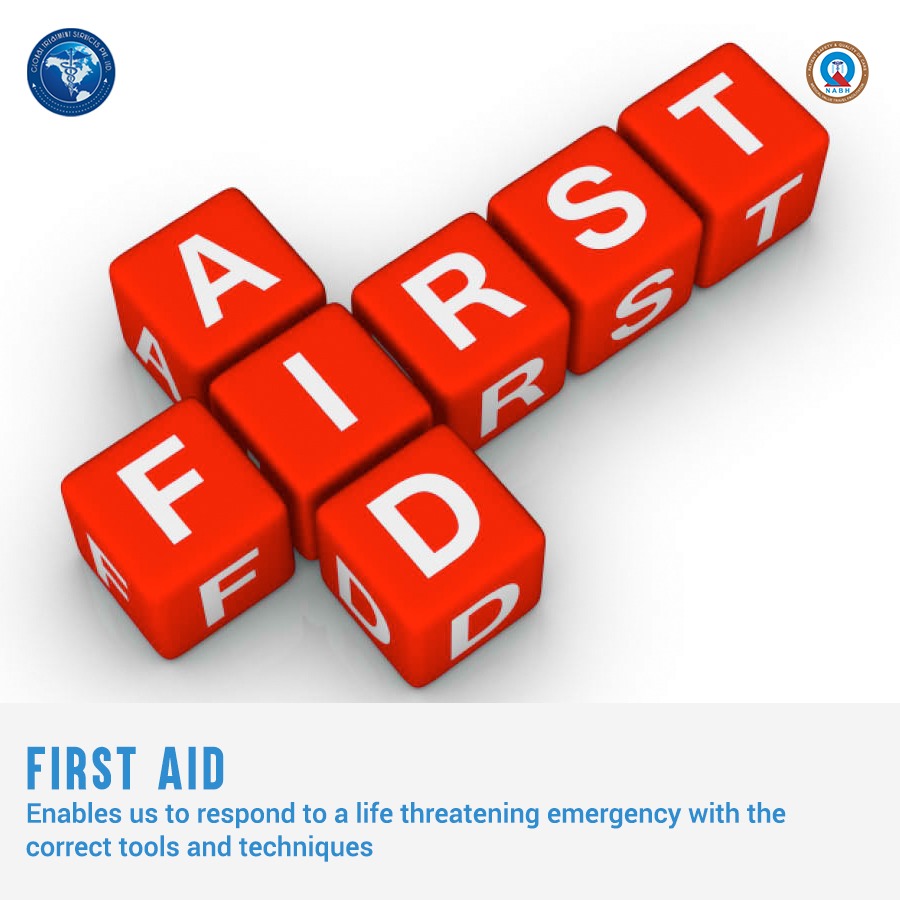A sudden health illness or injury can occur anytime or anywhere.In these critical situations,it is important to exercise immediate care procedures before emergency services arrive or can be reached.First aid consists of simple life saving techniques.
Firstly,let us understand some first aid facts.
- Aims of first aid are 3 P s .It stands for preserve life,prevent harm and promote recovery
- ABC is how it is performed.It stands for airway,breathing and circulation.
- CPR is the most important first aid procedure.It stands for cardiopulmonary resuscitation which helps maintain the flow of oxygenated blood.
ABC
- Airway: Making sure the airway is clear. Choking, which results from the obstruction of airways, can be fatal.
- Breathing: Once the airways are confirmed to be clear, determine whether the person can breathe, and, if necessary, provide rescue breathing.
- Circulation: If the person involved in the emergency situation is not breathing, the first aider should go straight for chest compressions and rescue breathing. The chest compressions will promote circulation. This saves valuable time. In emergencies that are not life-threatening, the first aider needs to check the pulse.
Recovery position
Even if the individual is breathing,it needs to be made sure that theere is no risk of airway obstruction. The recover position is critical in keeping the patient alive for longer in emergency situtations. Following are how the recover position should be cleared.
- Remove glasses if the individual is wearing them.
- Kneel next to the person, and place the arm nearest to you at a right angle to the body.
- Bring the other arm across the chest. Hold the back of your hand against their nearest cheek.
- With your other hand, hold the thigh furthest from you and pull up the knee. Make sure the foot is flat on the ground.
- Slowly pull down on the raised knee, and roll the body over towards you.
- Move the upper leg slightly, so that the hip and knee are bent at right angles. This makes sure that they do not roll onto their face.
- Gently tilt the head back so that the airway is kept open.
CPR
If a person is not breathing, CPR needs to be done. These chest compressions and rescue breaths can triple the chances of saving the life of the person.If you are not alone, send someone to call for help. While help is on the way, follow these CPR steps:
- Position your hand
Make sure the patient is lying on his back on a firm surface. Kneel beside him and place the heel of your hand on the center of the chest. - Interlock fingers
Keeping your arms straight, cover the first hand with the heel of your other hand and interlock the fingers of both hands together. Keep your fingers raised so they do not touch the patient’s chest or rib cage. - Give chest compressions
Lean forward so that your shoulders are directly over the patient’s chest and press down on the chest about two inches. Release the pressure, but not your hands, and let the chest come back up.Repeat to give 30 compressions at a rate of 100 compressions per minute. - Open the airway
Move to the patient’s head. Tilt his head and lift his chin to open the airway again. Let his mouth fall open slightly. - Give rescue breaths
Pinch the nostrils closed with the hand that was on the forehead and support the patient’s chin with your other hand. Take a normal breath, put your mouth over the patient’s, and blow until you can see his chest rise. - Watch chest fall
Remove your mouth from the patient’s and look along the chest, watching the chest fall. Repeat steps five and six once. - Repeat chest compressions and rescue breaths
Place your hands on the chest again and repeat the cycle of 30 chest compressions, followed by two rescue breaths. Continue the cycle.
For any queries regarding the procedure and treatment facilities,email us at query@gtsmeditour.com .

Post a comment